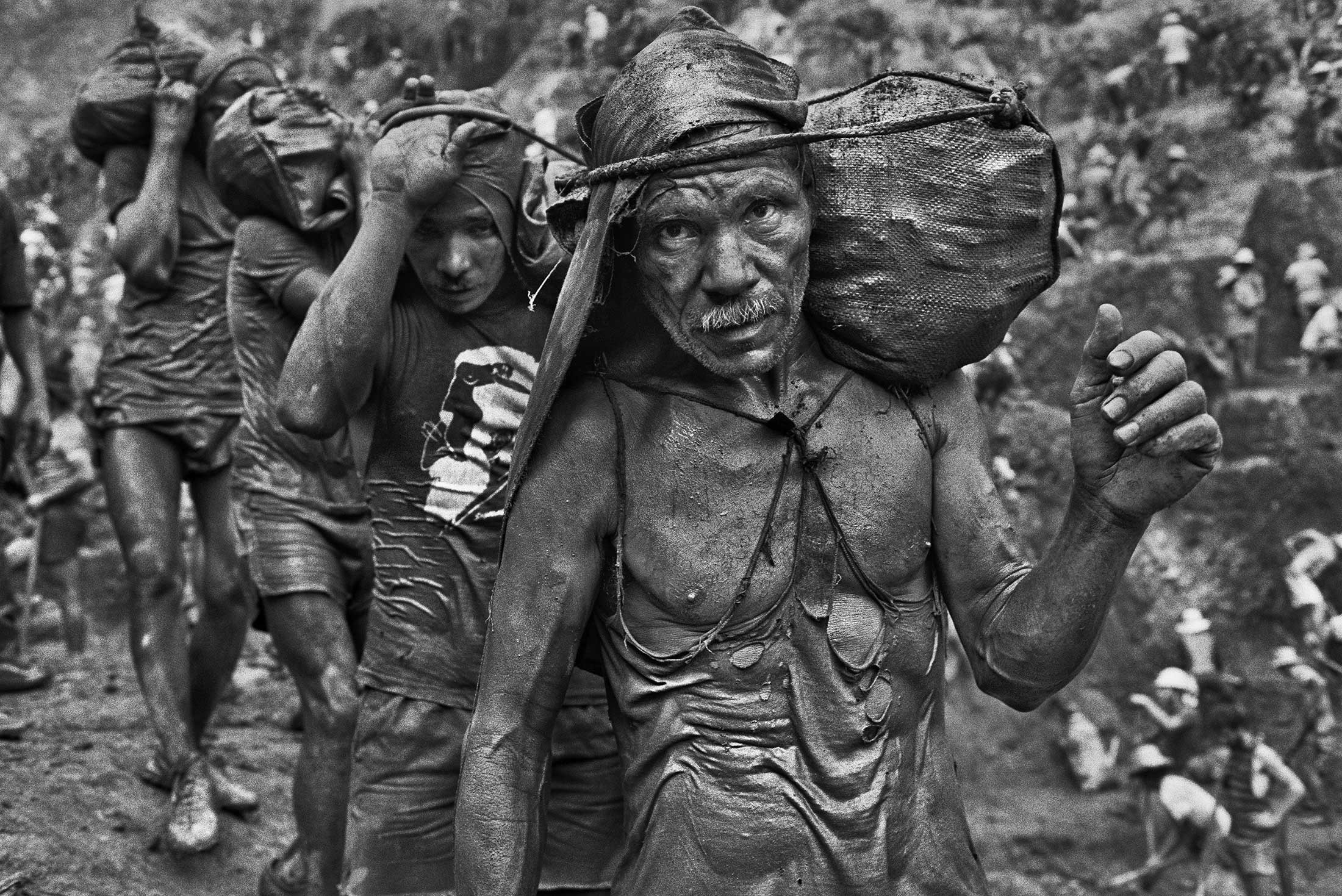The Dark Gold Rush: 20+ Haunting Photos Capturing The Hell Of Serra Pelada Mines In The 1980s
In 1979, a simple discovery by a local child ignited one of the most intense gold rushes in history. A small nugget found on the banks of a river near Serra Pelada quickly became the catalyst for a massive influx of prospectors.
By the early 1980s, Serra Pelada had transformed from a quiet corner of Brazil, located 430 kilometers south of the Amazon River’s mouth, into the world’s largest and most notorious open-air gold mine.
The allure of massive gold nuggets and the promise of untold riches drew tens of thousands to this harsh and remote site. What followed was a grim reality of exploitation, chaos, and violence.
Serra Pelada was a challenging destination to reach
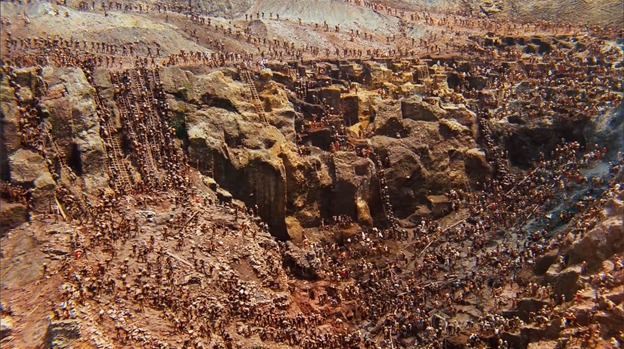
Reaching the remote gold mine was no easy feat. Miners had to fly in or trek on foot, often paying a small fortune for taxis to take them partway before they walked the final 15 kilometers (9.3 miles).
The rewards were worth it—huge gold nuggets were quickly found. one massive piece weighing 6.8 kilograms (15 pounds), worth $108,000 in 1980 (around $310,173 today).
Unlike other gold finds, the gold here was super genetically enriched. After interacting with the rich Amazon soil, rainwater concentrated the gold near the surface. This unique process, still not fully understood, gave Serra Pelada its extraordinary gold deposits.
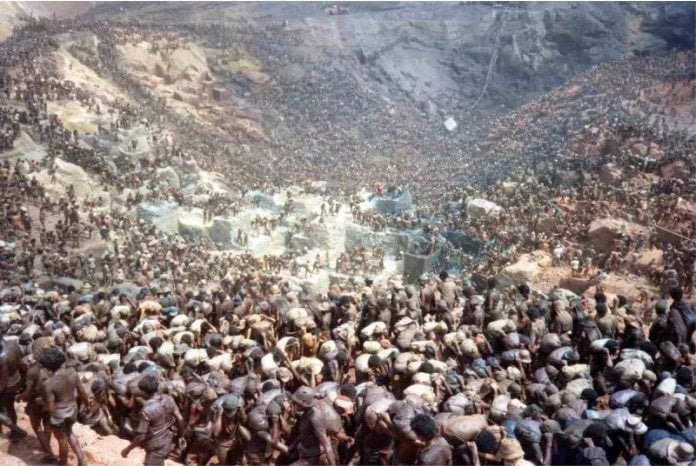
The best guess is that rainwater, mixed with decaying forest materials, turns acidic. This acidic water acts like a gold magnet, drawing and transporting gold particles through the ground.
Over time, these particles build up into some of the largest gold nuggets ever found.
The gold rush transformed the site into a cauldron of violence and exploitation
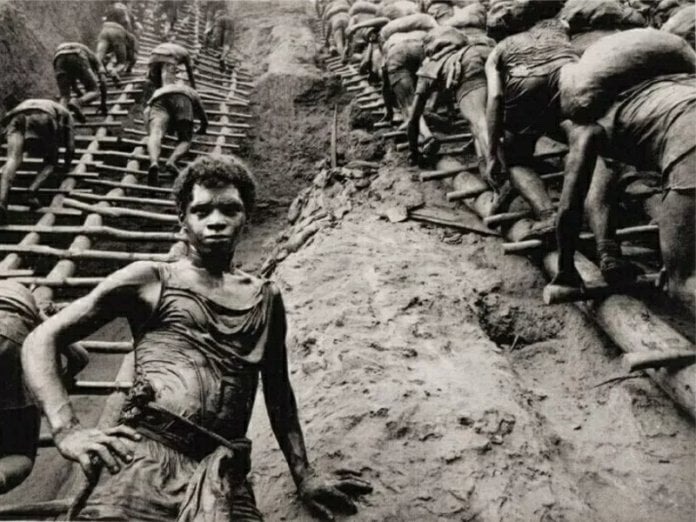
During the gold rush, Serra Pelada was infamous for its dreadful conditions and rampant violence. The town that emerged almost overnight became notorious for crime and vice, including murder and prostitution. The gold rush brought both immense wealth and severe hardship.
In the mine, the chaotic scene was marked by blocky, uneven areas. Each miner was assigned a 2×2 meter plot and was responsible for digging straight down.
This created dangerous conditions because if a neighboring miner stopped working, the surrounding blocks would collapse, potentially burying anyone below them.
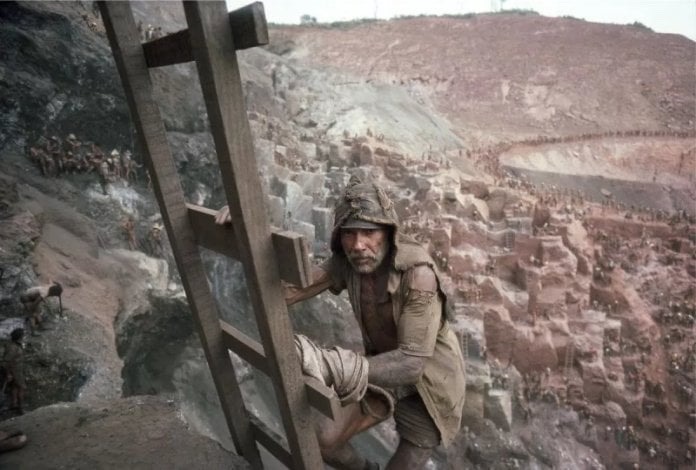
At its height, the Serra Pelada mine employed around 100,000 workers, known as “garimpeiros,” who endured brutal conditions. They scraped soil from the bottom of the pit, packed it into heavy sacks, and climbed 400 meters up wooden ladders to the top.
There, the soil was sifted for gold. The workers, nicknamed “mud hogs,” were paid 20 cents per sack, with a bonus for finding gold.
Brazilian photographer Sebastião Salgado captured the raw reality of Serra Pelada with haunting images that reveal the mine’s chaos and desperation. Reflecting on his experience, Salgado said,
“Every hair on my body stood on edge. The Pyramids, the history of mankind unfolded. I had traveled to the dawn of time.”
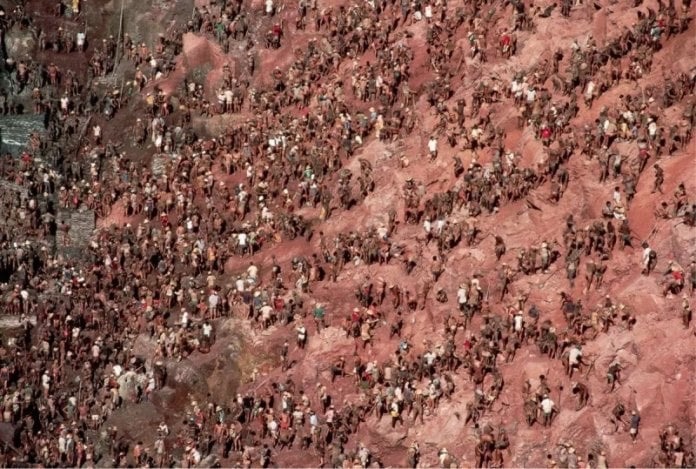
In a 1992 interview, he described the scene vividly:
“Swept along by the winds that carry the hint of fortune, men come to the gold mine of Serra Pelada. No one is taken there by force, yet once they arrive, all become slaves of the dream of gold and the need to stay alive. Once inside, it becomes impossible to leave.”
Salgado continued, “Every time a section finds gold, the men who carry up loads of mud and earth have, by law, the right to pick one of the sacks they brought out.
And inside they may find fortune and freedom. So their lives are a delirious sequence of climbs down into the vast hold and climb out to the edge of the mine, bearing a sack of earth and the hope of gold.”
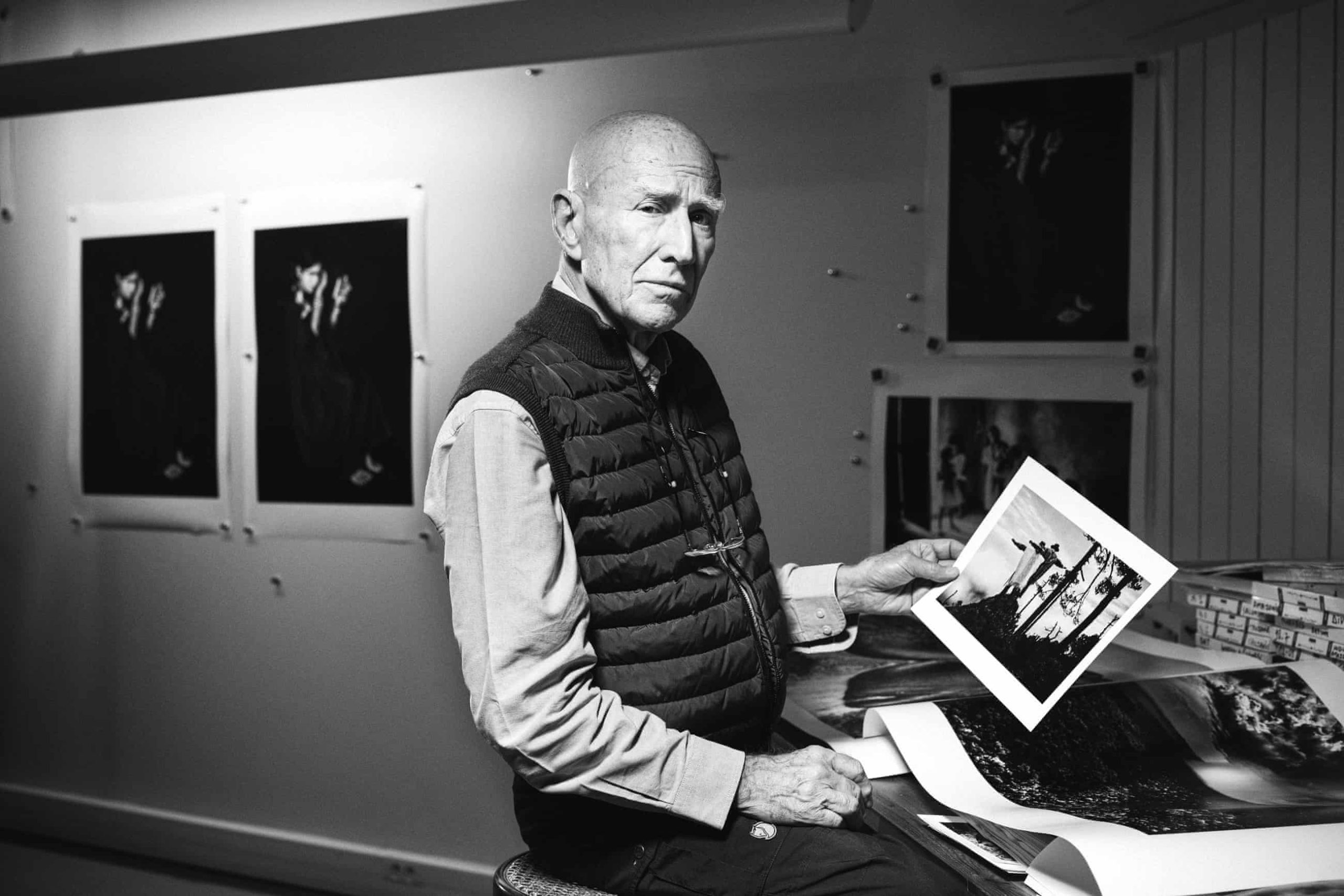
He observed, “Anyone arriving there for the first time confirms an extraordinary and tormented view of the human animal: 50,000 men sculpted by mud and dreams.
All that can be heard are murmurs and silent shouts, the scrape of shovels driven by human hands, not a hint of a machine. It is the sound of gold echoing through the soul of its pursuers.”
The Brazilian military took control to stop exploitation and smuggling
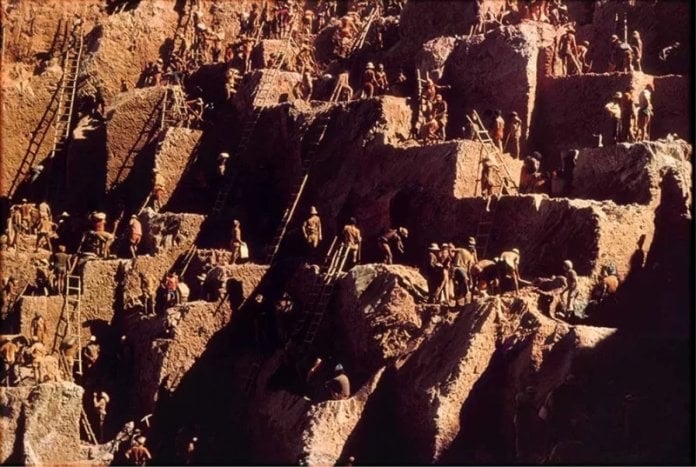
Three months after gold was discovered at Serra Pelada, the Brazilian military stepped in to take control. Their goal was to protect workers and prevent conflicts between miners and mine owners.
Prior to the military intervention, the prices of basic goods were outrageously high, with water costing $3 per liter (about $8.62 in 2016).
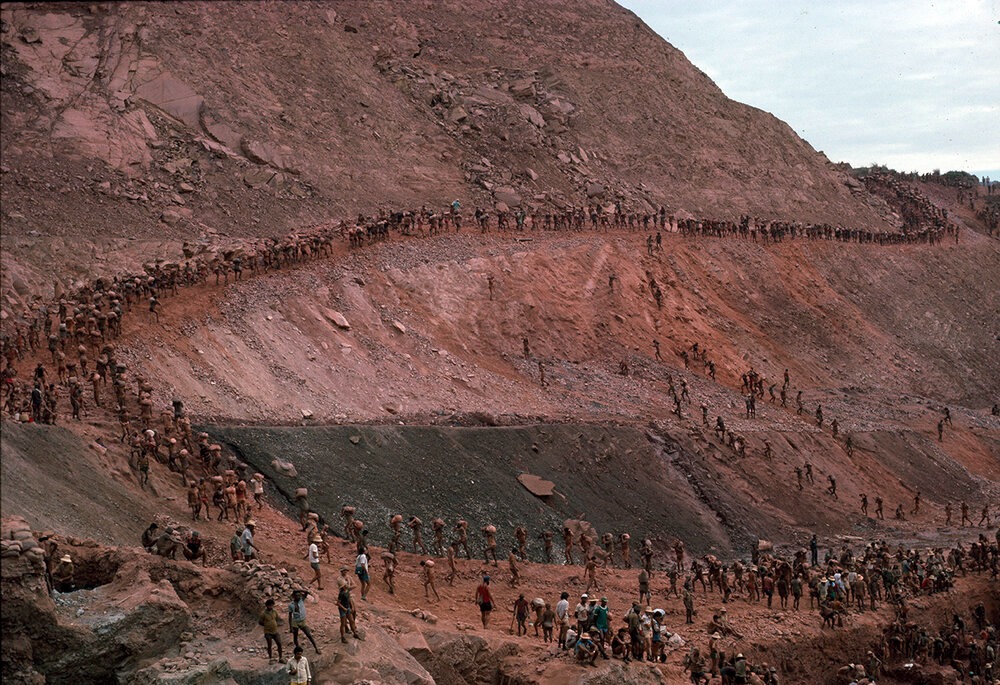
The government promised to buy all the gold found by the miners at 75 percent of the London Metal Exchange price.
Official records show nearly 45 tons of gold, but estimates suggest that up to 90 percent of it was smuggled out. At today’s prices, this could be worth around 1.5 billion dollars.
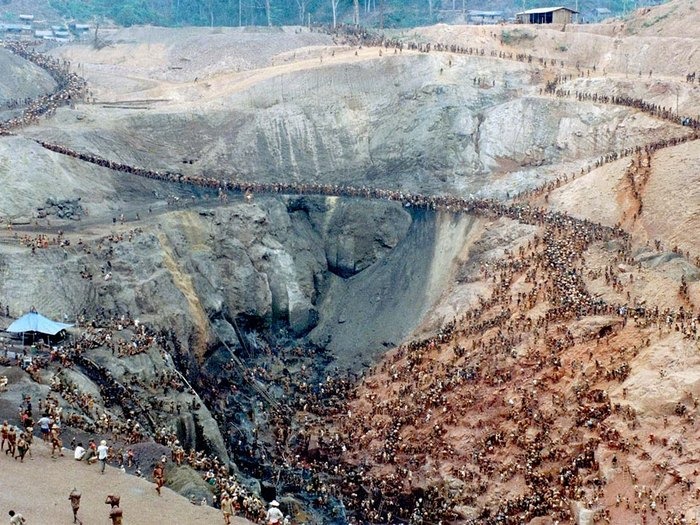
While the military banned women and alcohol from the mine, the nearby town was filled with “stores and whores,” where thousands of underage girls prostituted themselves for small amounts of gold.
The town was also plagued by violence, with 60 to 80 unsolved murders occurring each month.
Striking photos that exposed the brutal gold rush of the 1980s
1. Serra Pelada was a major gold mine in Brazil
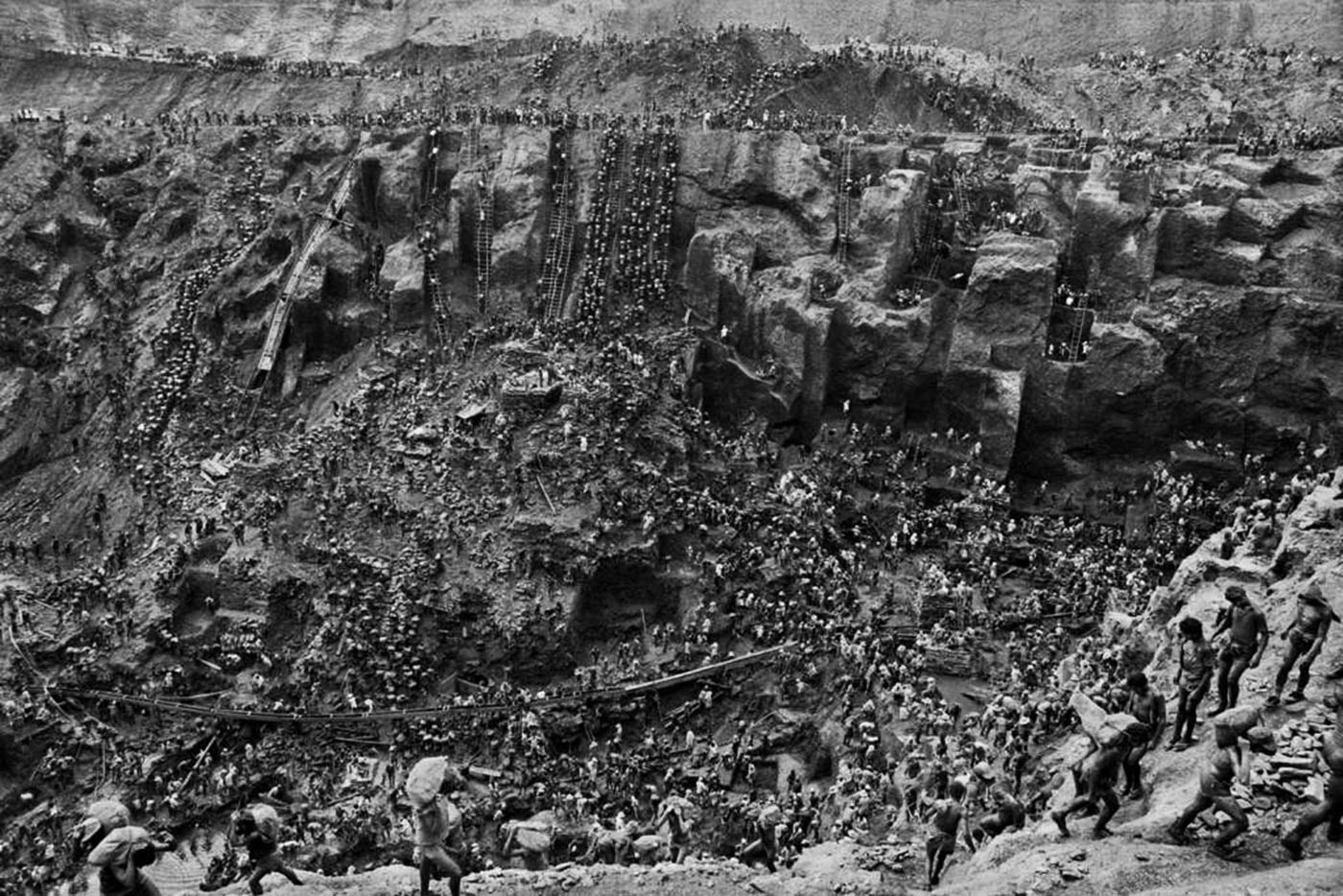
2. In the early 1980s, tens of thousands of prospectors arrived at the site

3. Workers, known as “mud hogs,” labored in muddy conditions
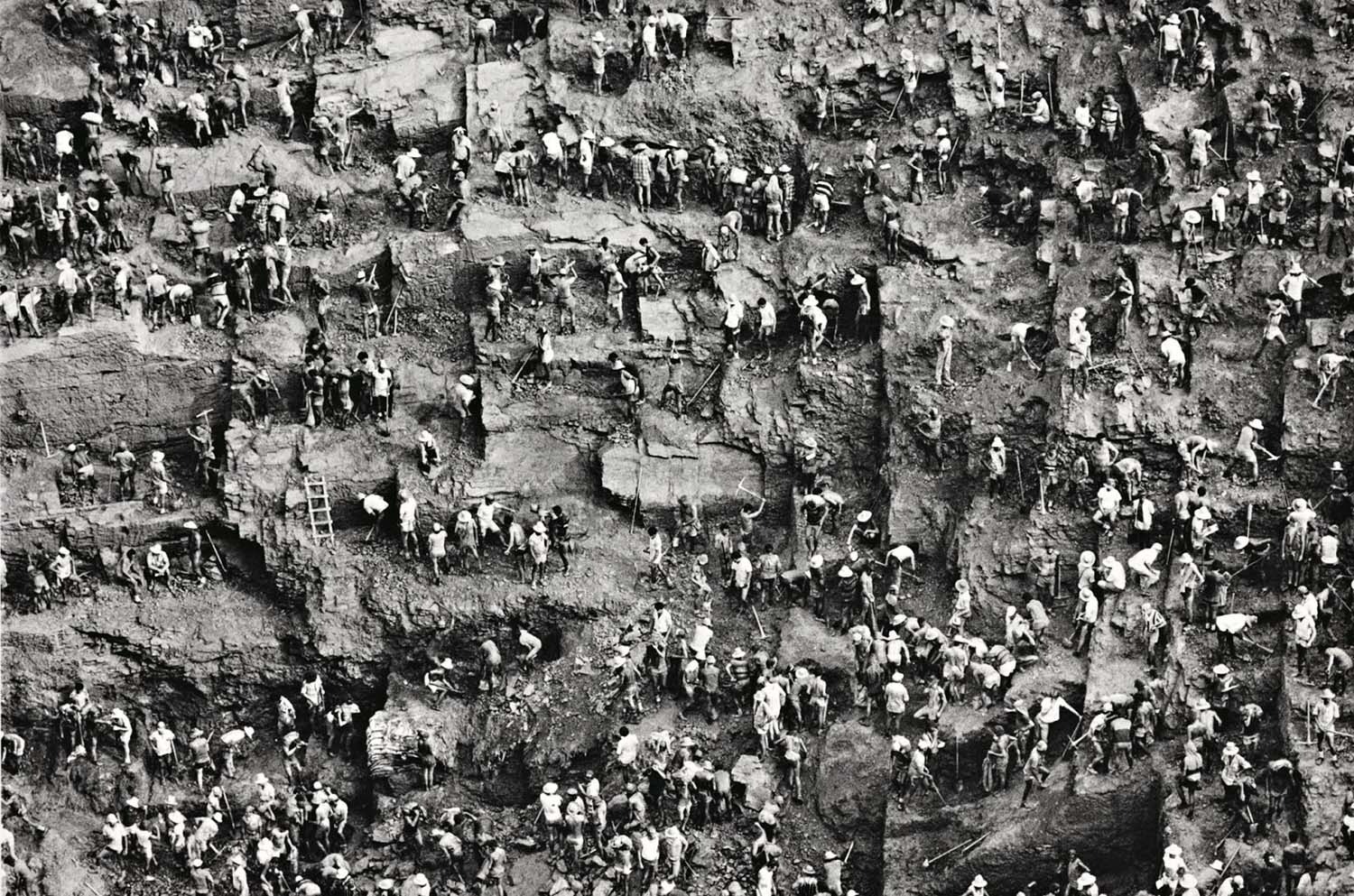
4. Mercury contamination made nearby areas hazardous
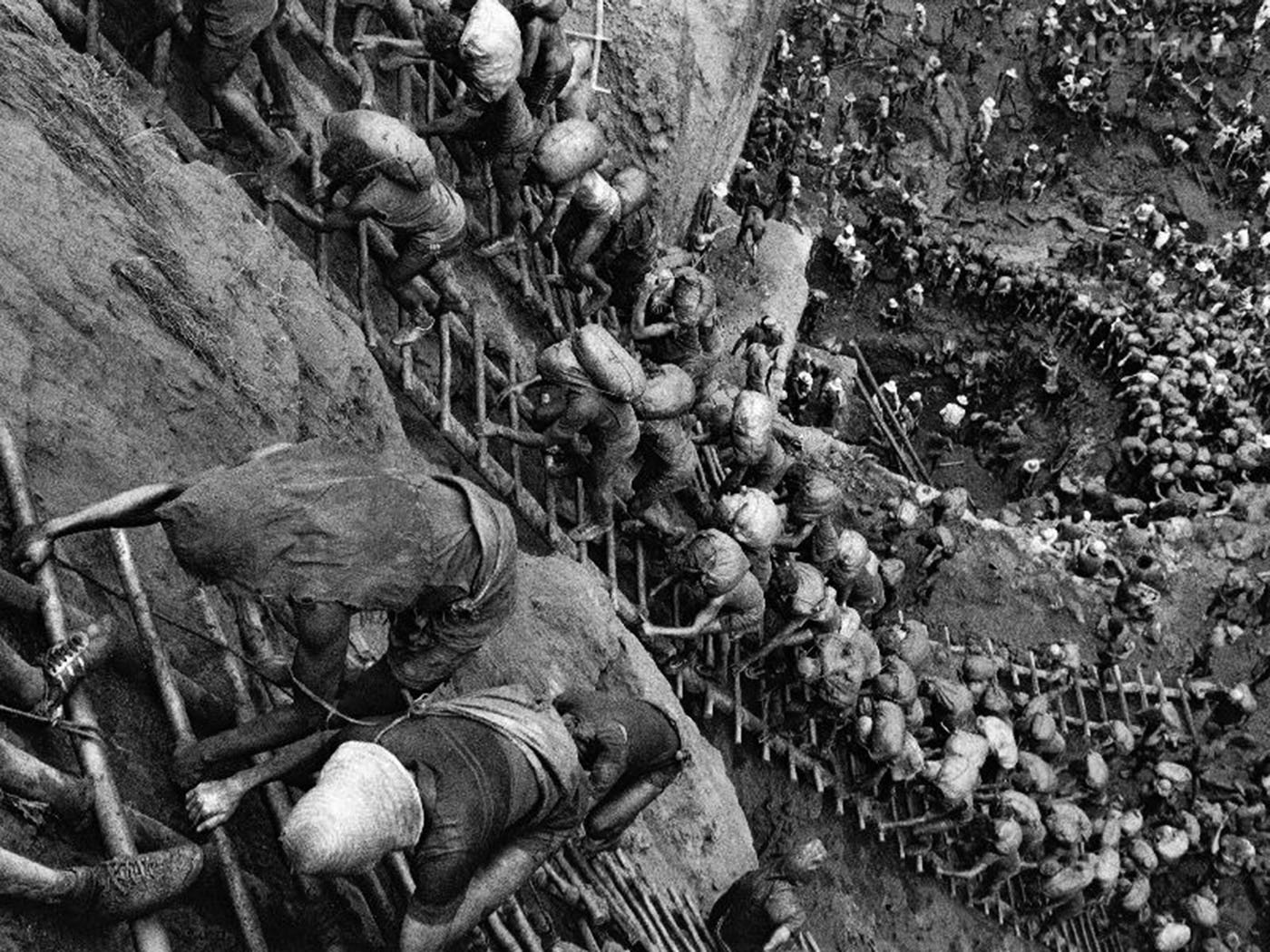
5. At its peak, the mine employed around 100,000 diggers

6. Workers were paid 20 cents per sack of dirt
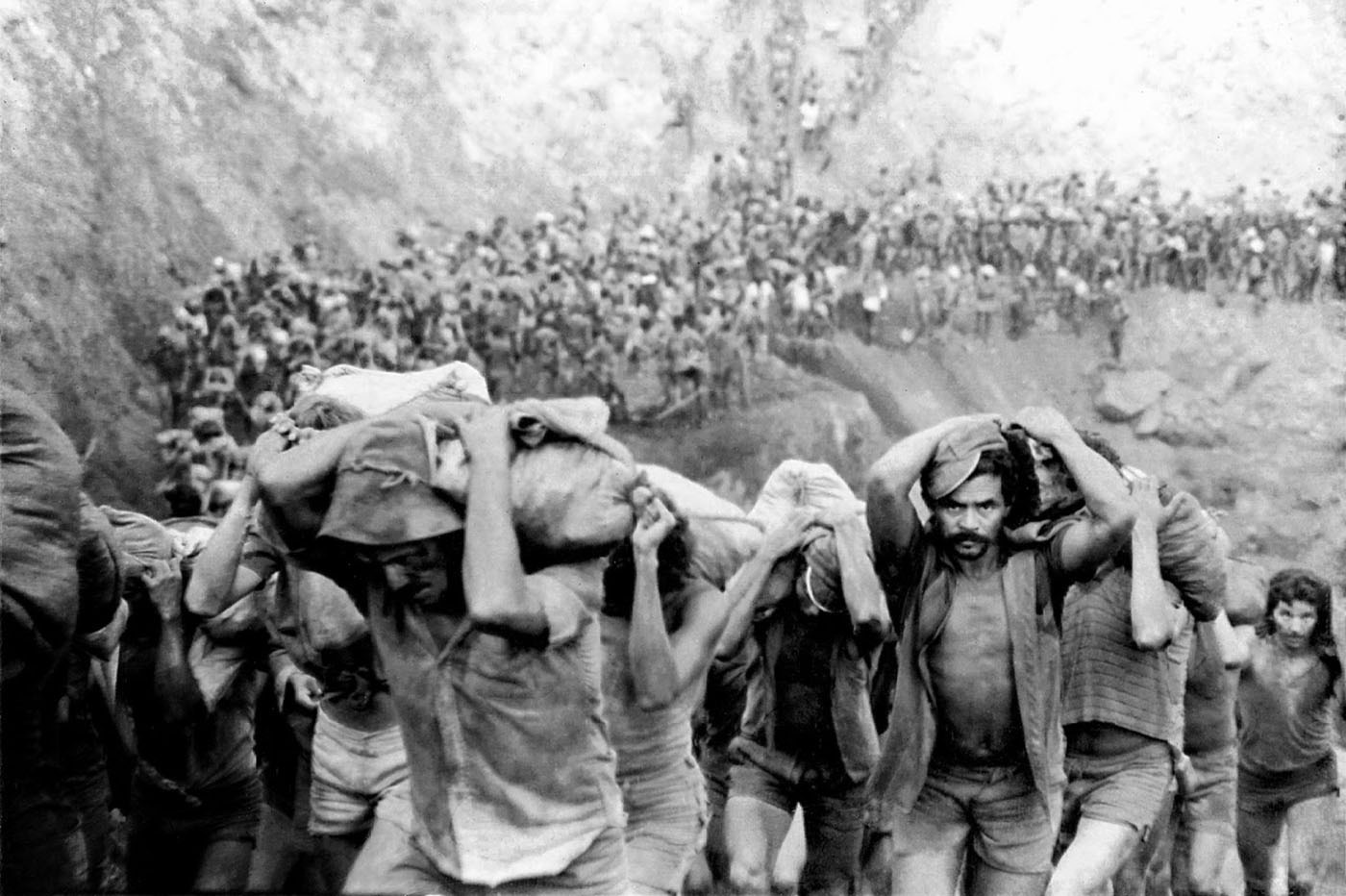
7. Conditions were harsh, and exploitation was rampant
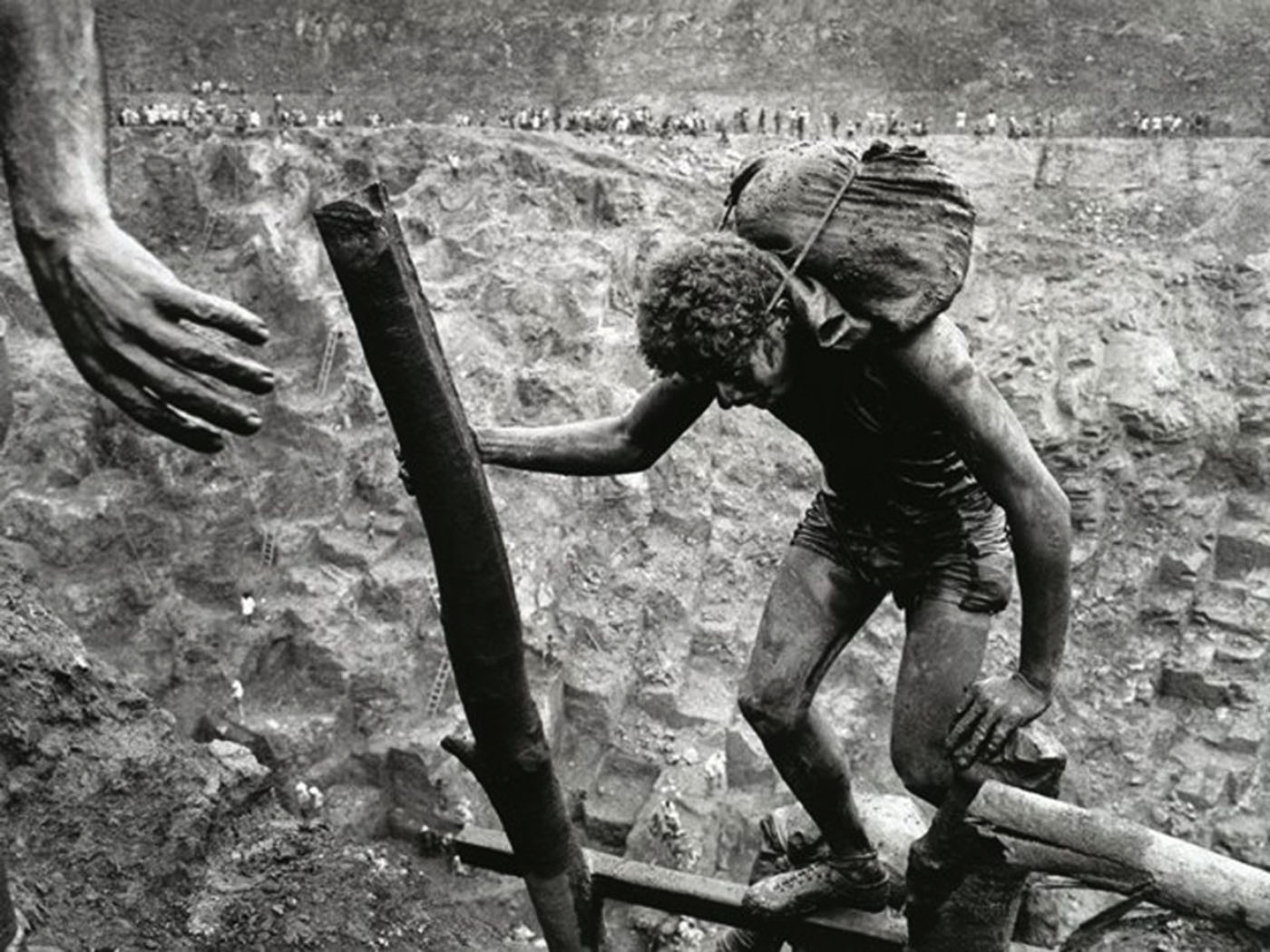
8. Three months after the discovery, the Brazilian military took control to protect workers
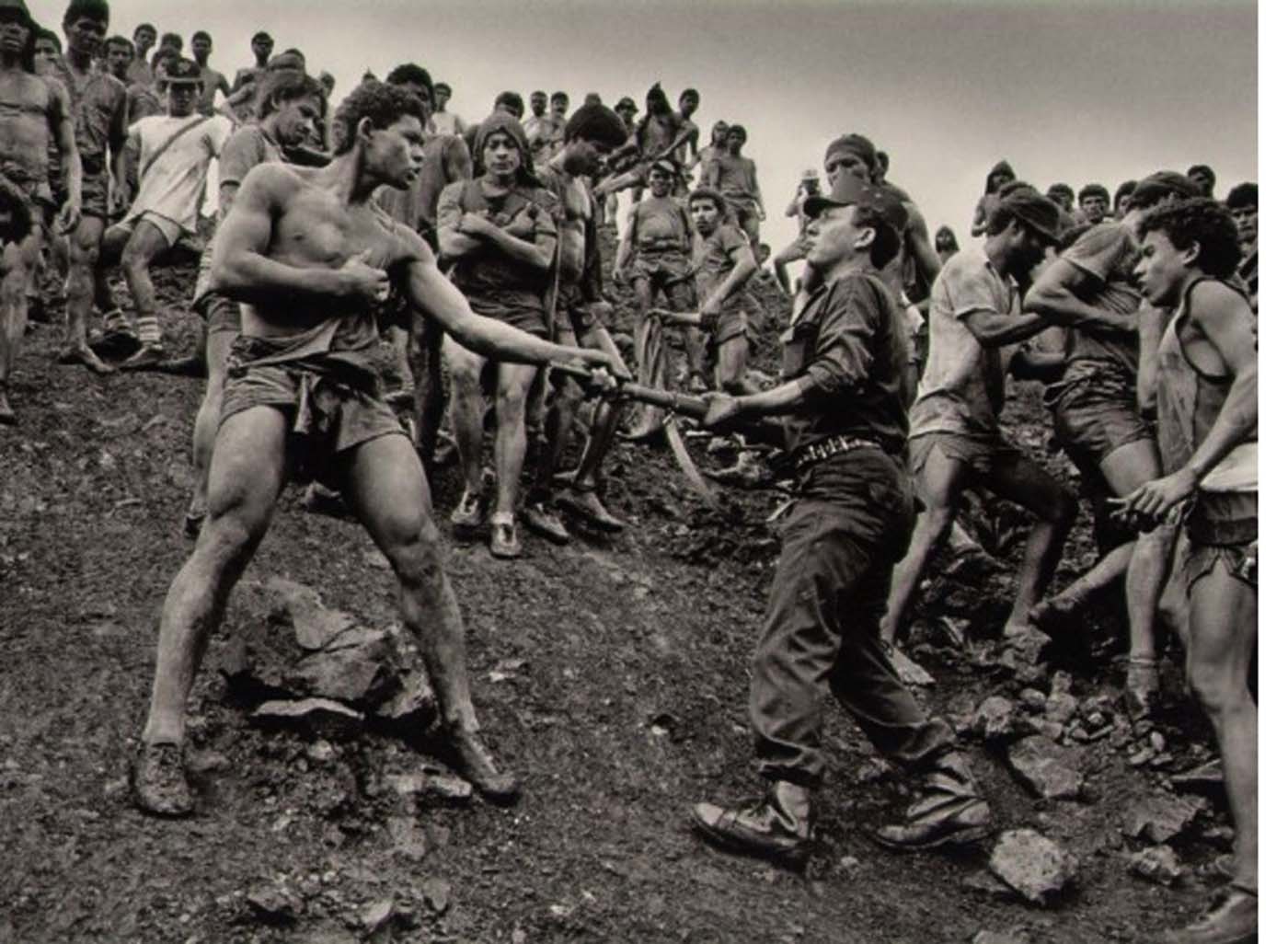
9. The government bought gold at 75% of the London Metal Exchange price
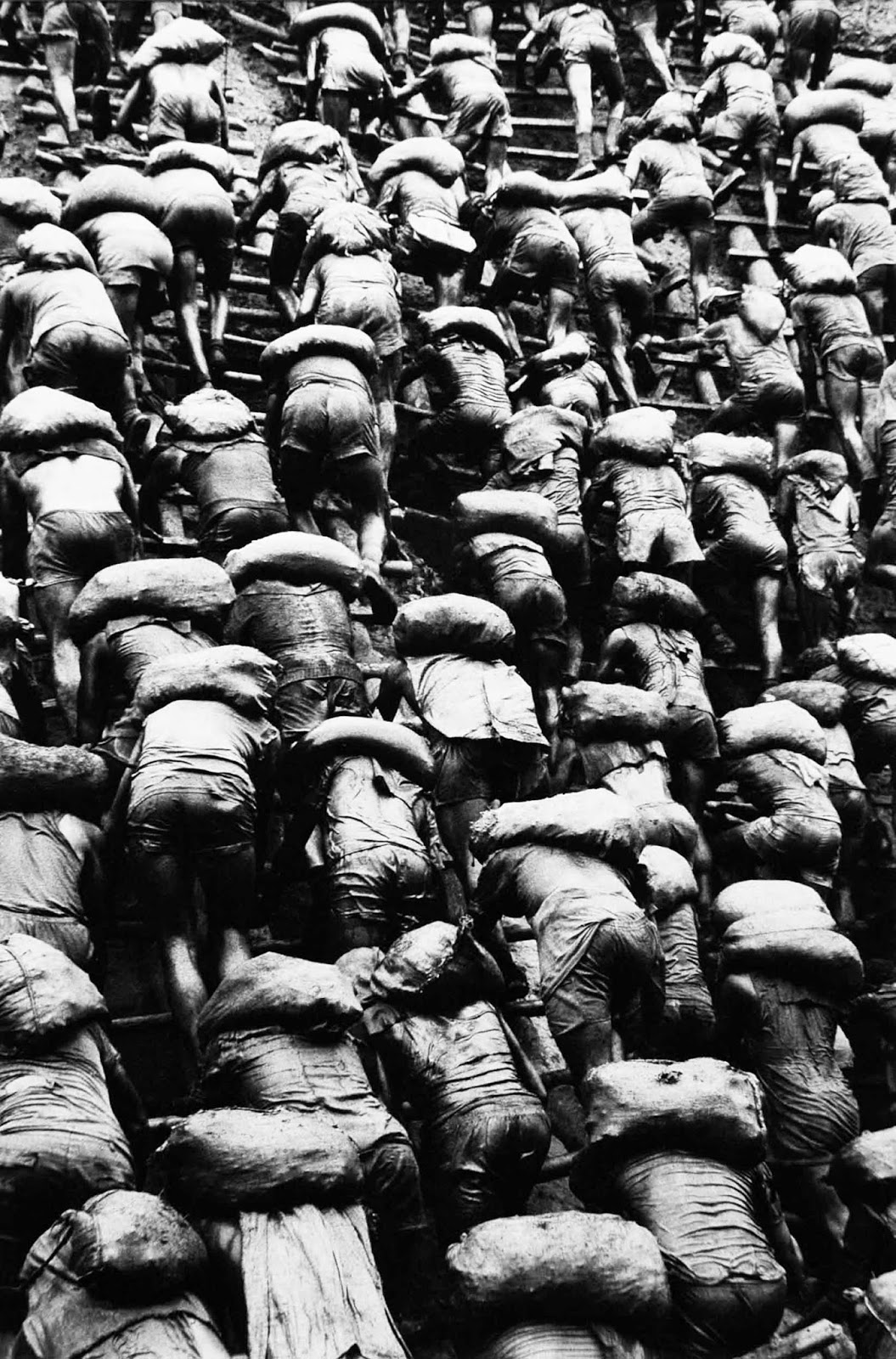
10. Officially, just under 45 tons of gold was recorded
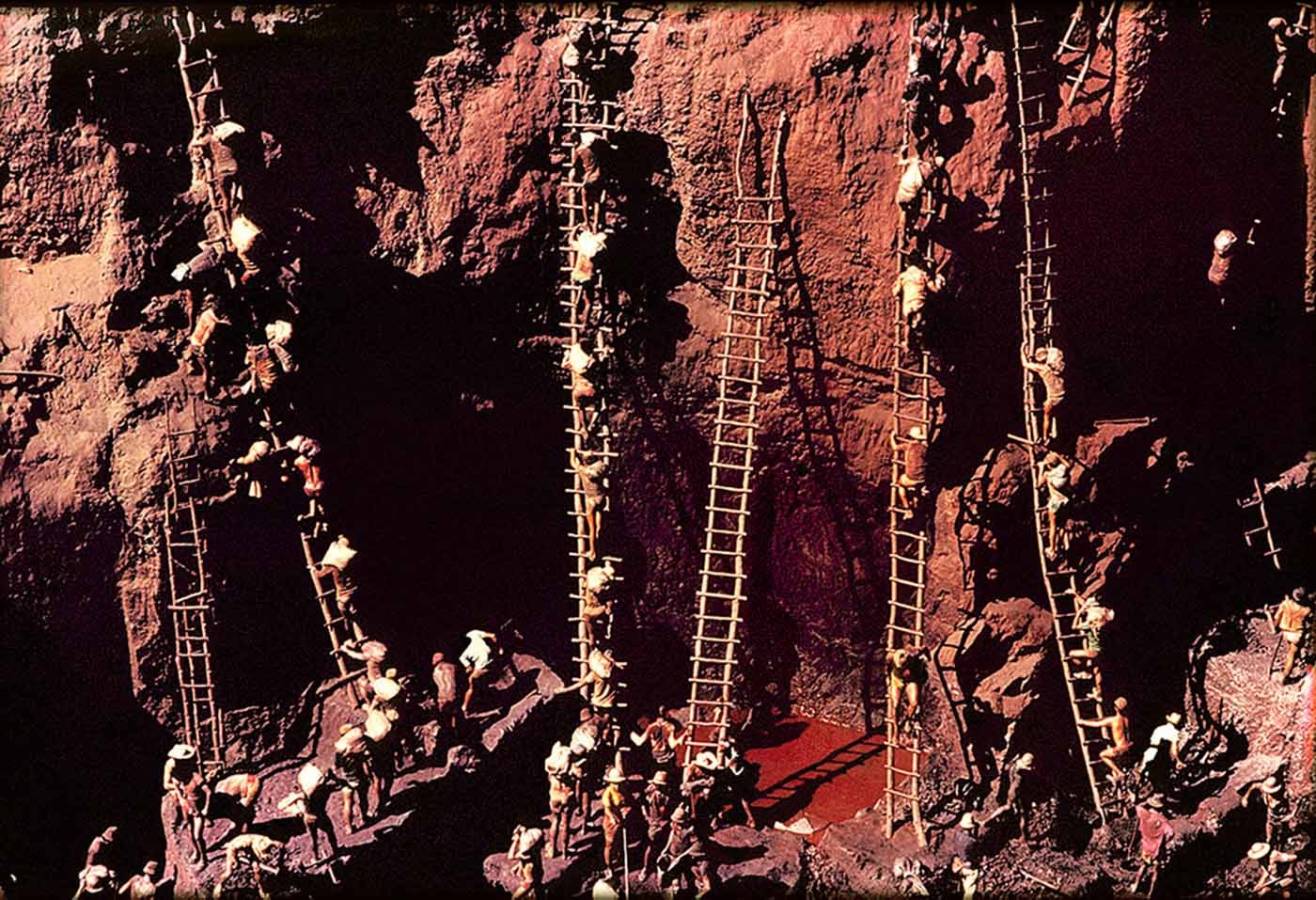
11. Known as “mud hogs,” these men carried heavy sacks of dirt, hoping to uncover gold
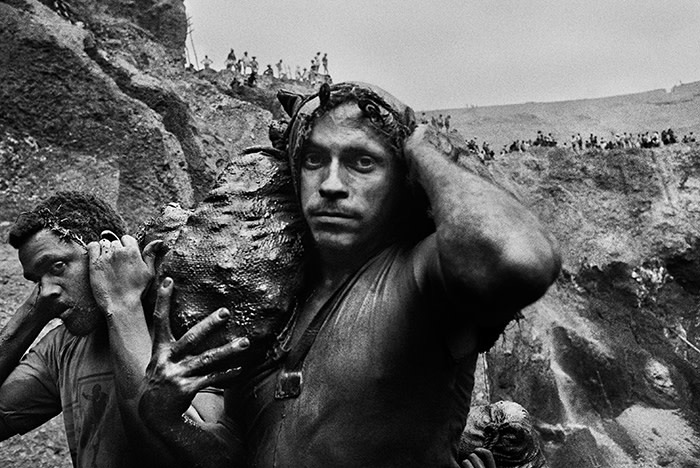
12. The lines of miners, each carrying heavy sacks of earth, clamber up rickety ladders etched into the muddy cliffs
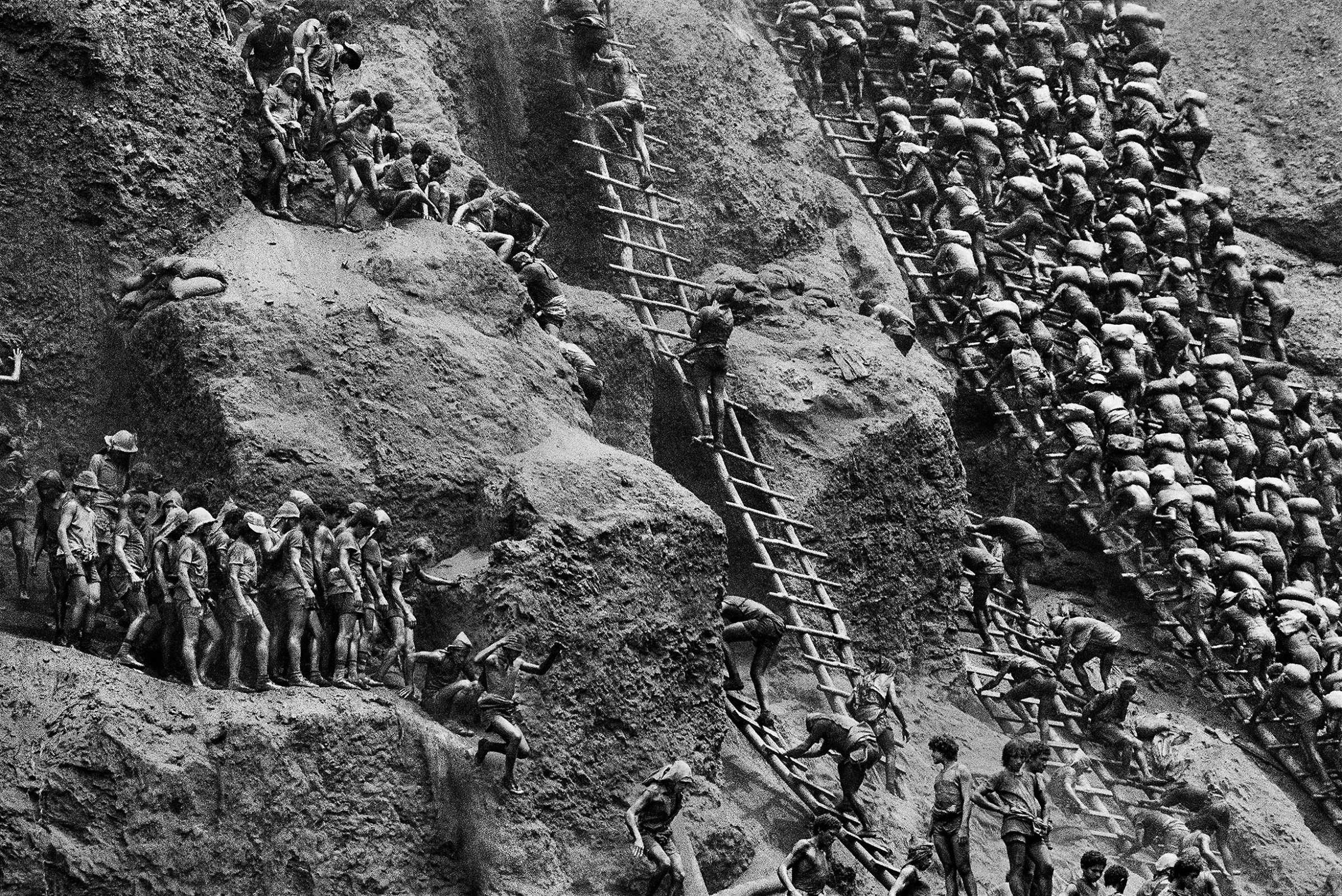
13. This close-up image captures the raw physicality of the workers at Serra Pelada, their legs caked in mud
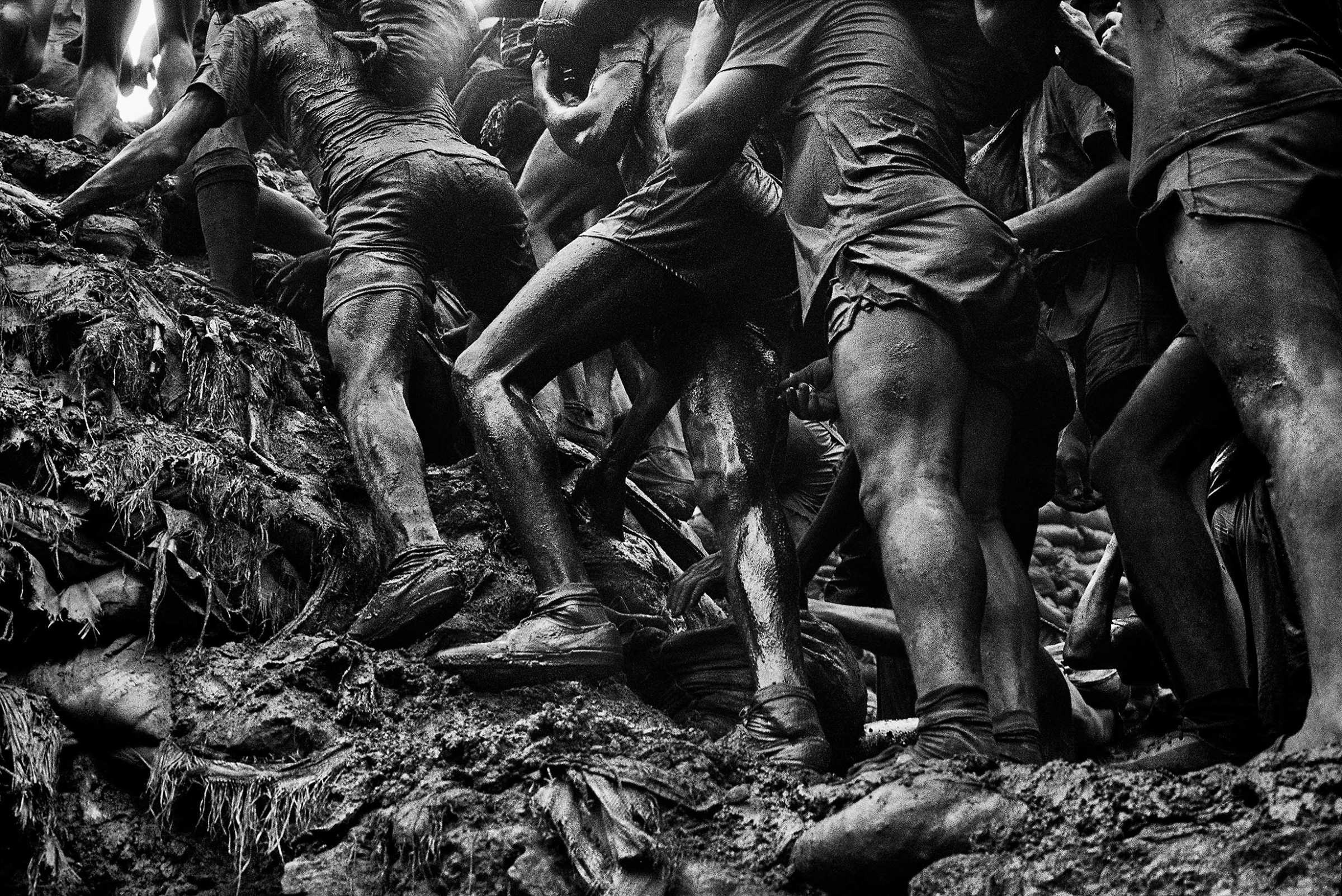
14. The exhaustion and strain on the faces of miners
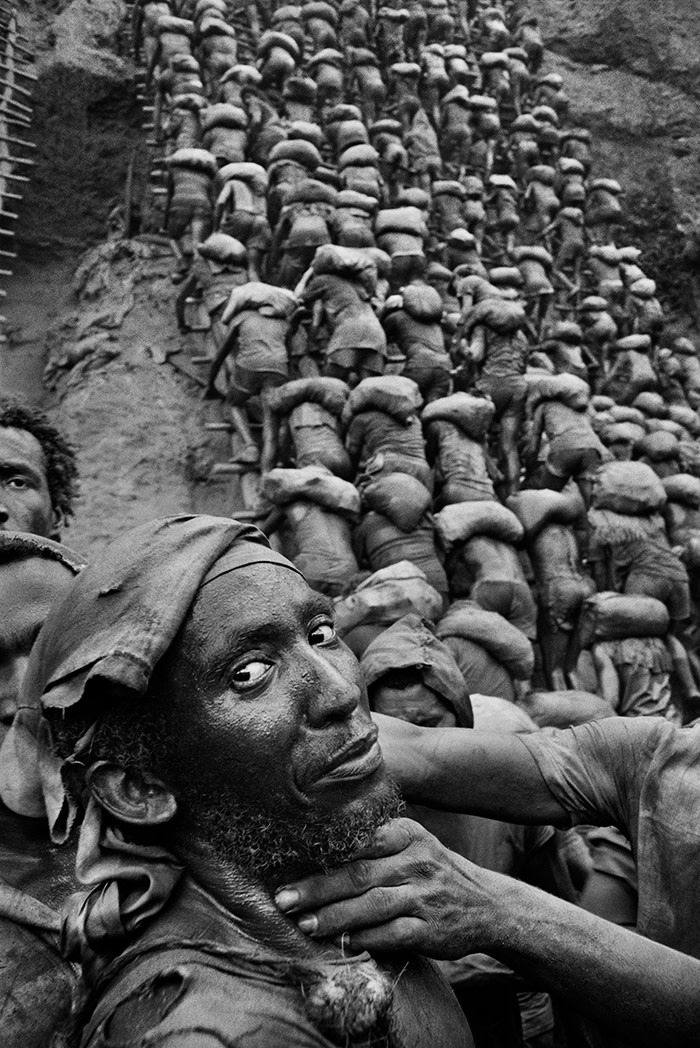
15. Miners with worn face and tattered clothing
